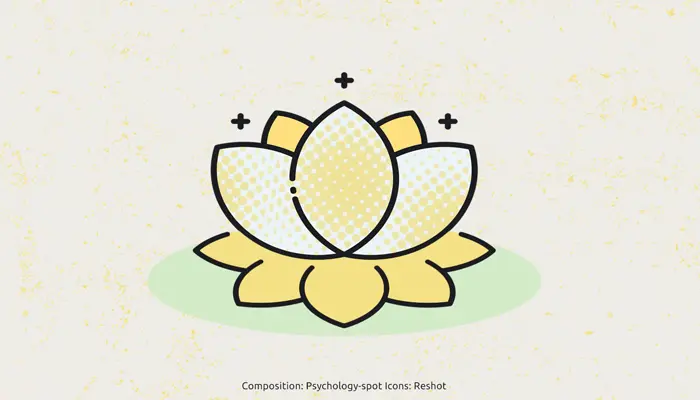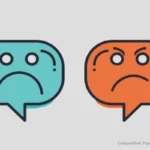
Mantras have been known for centuries, especially in India, where they are of particular importance. However, only now Psychology and Neurosciences begun to take an interest in them and rediscover their power.
Reinforced by breathing and concentration, the benefits of mantras are not limited to our emotional health, but can be extended to our body, making it a meditative practice that we can include in our routine. And best of all, we don’t need to spend a lot of time on them: 10 or 15 minutes a day is enough.
What is a mantra?
The word “mantra” comes from Sanskrit and can be translated as “mental tool” or “instrument of thought”. However, if we pay attention to its etymology it reveals a deeper meaning. The root “man” means “mind” and “tra” “liberation”, so that the meaning of mantra would be “that which liberates the mind”.
Therefore, mantras are a combination of transcendental sounds to free the mind from the anxieties of everyday life. They are a phrase, word or syllable that is repeated continuously and rhythmically. Because they keep the mind occupied, they have the power to stop the habitual flow of thoughts and concerns to clarify our vision and facilitate a state of relaxation.
What types of mantras are there?
There are many types of mantras. Traditional mantras usually come from Sanskrit as many have their roots in Hinduism. In fact, each mantra is thought to vibrate in a unique way and influence our mind and body in different ways.
In a general sense, we can refer to two main types of mantras:
1. Tantric mantras. These mantras originate from the Tantras and are often practiced for specific purposes, such as promoting longevity, maintaining health, or improving illness. They are often more difficult to practice and, according to Hindu tradition, must be learned from a guru.
2. Puranic mantras. They are relatively simple and easy to learn, so anyone can recite them. They are often used to calm emotions and find a state of relaxation and concentration.
One of the most popular mantras among Tibetan Buddhists is “Om mani padme hum,” which focuses on developing compassion. “Om gam ganapataye namaha” is another mantra widely used to find the strength to help us face life challenges and emerge stronger from them.
However, there are other simpler mantras, such as the universal and famous “Om”. In Hindu culture, “Om” is the original and primordial tone of the universe as it is understood that the entire universe is always pulsating and vibrating. It is the sound of creation. In fact, it is curious that when this mantra is recited, it vibrates at the frequency of 136.1 Hz, which is the same that has been found in everything in nature, according to a study conducted at Amity University.
Sanskrit, which is the language of most mantras, is claimed to have a deeper impact on our body and mind. It could be because it is the mother of all languages since most modern languages have evolved from Sacrit. In fact, Jung suggested that Sanskrit mantras act on our unconscious mind by activating ancient archetypes. In any case, Sanskrit is also a very rhythmic language and, to some extent, it mimics the sounds of nature, which can reinforce its impact on a mental level.
How do mantras act on the brain?
The language has a profound impact on our brain and emotions. When we hear certain sounds, we experience particularly strong visceral reactions. A scream can generate an instant reaction of tension and fear. Hearing a wolf howling in the middle of the night can make us feel irrational fear. The sound of a traffic accident triggers adrenaline. The purr of a cat calms and relaxes us. A song can give us goosebumps. The laugh of a baby makes us smile. Hate speech generates hatred while kind words generate compassion and love.
Therefore, it is reasonable to assume that mantras also have an emotional and physical effect. In fact, several studies done with functional magnetic resonance imaging while people recited mantras, have shown that there are important changes in brain function.
Research carried out at the University of Hong Kong found that mantras can generate an increase in alpha and theta waves at the brain level. The alpha and theta waves are those that facilitate a state of relaxation, creativity and visualization.
Mantras have also been found to “deactivate” the cortical areas of the brain linked to reasoning and logic while activating the default neural network, which has been associated with mental activities such as creative problem solving, artistic talent, ethical and introspection. In this way the brain enters a state of full concentration effortlessly.
At the same time, mantras activate areas of the brain such as the thalamus, which is related to sensory perception, and the hippocampus, which is linked to memory and learning, which could help us improve our cognitive performance. In addition, they facilitate the interconnection between the two cerebral hemispheres, allowing our brain to work as a perfectly integrated whole.
The benefits of mantras for the mind and body
Every year new research is published on the benefits of listening to mantras. A meta-analysis of more than 2,000 studies carried out in the last 40 years concluded that “Mantras can improve mental health and negative affectivity in people”, acting specifically on anxiety, stress, depression, exhaustion, anger and anguish.
One of the keys is that mantras generate a relaxation response that not only calms the mind and drives away thoughts and worries, but also synchronizes breathing and heart rate, generating a state of inner peace.
Another small-scale study with children at Amity University found that reciting mantras for as little as 15 minutes has a beneficial effect on IQ. Children who recited mantras had better cognitive performance on school tests.
However, perhaps the most interesting thing is that the benefits of mantras extend to the physical level. A study carried out at the University of West Virginia analyzed the effects of mantra meditation on telomere length (on which our aging depends), telomerase activity (the enzyme that lengthens telomeres) and plasma levels of amyloid-β (a peptide that has been linked to neurodegenerative diseases).
After 12 weeks, practicing 12 minutes a day, those who followed the mantra meditation program showed an improvement in these plasma markers. They presented “Improvements in cognitive function, sleep, mood and quality of life, suggesting possible functional relationships,” according to these scientists.
In fact, there is evidence that the health benefits of mantras do not depend on our faith in them, but on concentration. As George Leonard wrote: “In the heart of each one of us, whatever our imperfections, there is a silent pulse with a perfect rhythm, composed of waves and resonances, which is absolutely individual and unique, but nevertheless connects us with everything in the universe”.
Although science still has a long way to go to understand the effects of mantras on our mind and body, the truth is that this practice helps us rediscover the essential mental balance that can become a solid base on which to build a lifestyle that takes care of our physical health.
How to choose a personal mantra?
It is not essential that you learn Sanskrit mantras. The most important thing for choosing a personal mantra is that it has a special meaning that resonates with you. The mantra you choose should direct your energy and intention to achieve that state of relaxation. So you can choose a classic mantra or go for a short word or phrase and make it your personal mantra.
How do you know if the mantra works?
If you recite a mantra for 10 minutes every day, quickly you will know if you have chosen the right sounds for you. The first sign is that it should fully attract your attention, taking you to the here and now, since its main objective is to quiet the mind and banish that constant rumor of thoughts. The second sign that you have chosen the right personal mantra is that it makes you feel good, calm and empowered.
As a general rule, when reciting a mantra you must go through different states of consciousness, which will indicate if the mantra is beneficial for you:
• Relaxed and focused state of mind. Because the mantra must supplant habitual thoughts, distractions, and worries, the mind is able to relax and focus, with nothing to disturb it.
• Rotation of consciousness around the mantra. Little by little you will notice that your mind begins to “turn” around the mantra, accumulating that psychological energy that you were wasting on worries and distractions.
• Sakshi Bhava state. It is a peculiar state, also known as “witness consciousness,” in which you become an impartial observer of your own mind. You can observe the psychological phenomena that are happening without holding on to those thoughts, feelings and sensations, so that they do not generate aversion or attachment.
• Loss of consciousness of the outside world. When you use the proper meditation mantras, it is likely possible that at some point you lose connection with your environment and your consciousness turns inward into a state of introspection.
• Awareness of the mantra. When you practice a lot, you can lose the consciousness of the”self” since you completely merge with the mantra. It is a state in which you forget yourself to dedicate yourself body and soul to meditation.
How to recite a mantra?
If you want to recite a personal mantra, you can do it in three different ways:
1. Baikhari (audible). It involves reciting the mantra out loud, a recommended practice for those who are taking their first steps in meditation as it facilitates concentration.
2. Upanshu (whisper). In this case it is not necessary to raise your voice, the mantra is recited in a whisper, so it is a suitable technique for those who already have some practice with meditation through mantras.
3. Manasik (mental). To recite a mantra it is not necessary to speak or whisper, you can also repeat it mentally. It is a more complex practice since it requires greater concentration so that thoughts and concerns do not interfere with the recitation of the mantra, but it usually leads to higher states of consciousness.
Sources:
Gao, J. et. Al. (2019) The neurophysiological correlates of religious chanting. Nature; 9: 4262.
Innes, K. E. et. Al. (2018) Effects of Meditation and Music-Listening on Blood Biomarkers of Cellular Aging and Alzheimer’s Disease in Adults with Subjective Cognitive Decline: An Exploratory Randomized Clinical Trial. J Alzheimers Dis; 66(3): 947-970.
Lynch, J. et. Al. (2018) Mantra meditation for mental health in the general population: A systematic review. European Journal of Integrative Medicine; 23: 101-108.
Chamoli, D. et. Al. (2017) The Effect of Mantra Chanting On the Performance IQ of Children. In: Researchgate.
Dudeja, J. (2017) Scientific Analysis of Mantra-Based Meditation and its Beneficial Effects: An Overview. International Journal of Advanced Scientific Technologies in Engineering and Management Sciences; 3(6):21.
Simon, R. et. Al. (2017) Mantra Meditation Suppression of Default Mode Beyond an Active Task: a Pilot Study.Journal of Cognitive Enhancement; 1: 219–227.
Berkovich, A. et. Al. (2015) Repetitive speech elicits widespread deactivation in the human cortex: the “Mantra” effect? Brain and Behavior; 5(7): e00346.



